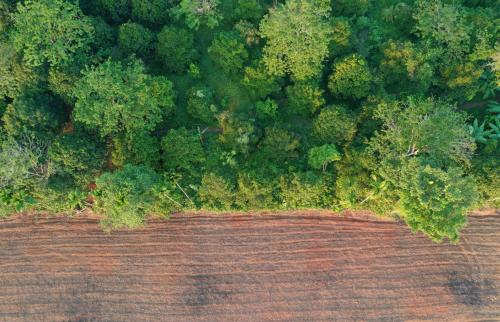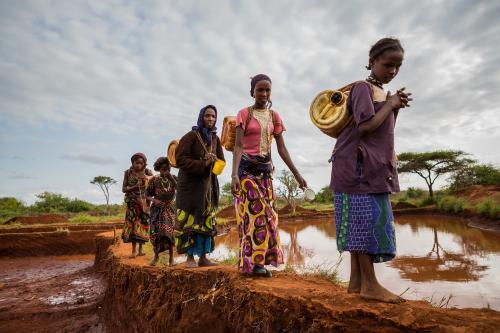After extending negotiations nearly two days beyond their originally scheduled deadline, negotiators at the climate change meeting in Durban have agreed on a set of agreements, including a high-profile deal called the “Durban Platform for Enhanced Action.” As discussed in my earlier post, the agenda at Durban was unusually complex, as it encompassed both relatively narrow discussions about how to implement earlier decisions as well as broad discussions about the future climate regime under complementary (and some might say competing) visions for international action. There were essentially three big questions at Durban, and all have been addressed, although not all in a meaningful manner.
The first question concerned the future of the Kyoto Protocol. The Kyoto Protocol’s first commitment period ends in 2012, and some supporters argued that without a second commitment period, the agreement would cease to be relevant. As such, some countries—particularly developing countries—expressed their hopes that developed countries would agree to targets under a second commitment period. While many important developed countries did not sign up for second commitment periods (Japan, Russia, Canada) or were never part of the agreement (United States), the European Union did agree to implement its own targets for emissions reduction under the aegis of the Kyoto Protocol. This was a concession for some of the more vocal developing country parties and was tied to an understanding that there would likely not be a third commitment period. Thus, the Protocol was granted an extension, but it is also clear even to its supporters that its days are now limited. This decision was clearly linked to discussions on the second major question.
The second question was how to create a new international treaty that, in the language of those advocating for a more robust international approach, would require “legally binding” commitments from all countries. Such a treaty would be able to replace the Kyoto Protocol and, possibly, the voluntary approach embedded in the Cancun Agreements. At Durban, delegates were not trying to negotiate the treaty itself, but went to great efforts to establish a timeline for doing so. The outcome of these protracted and contentious discussions was the Durban Platform, a compact, two-page document that sets out a motivation and process for reaching a new agreement by 2015.
This Platform contains three important elements. First, it notes a goal of keeping global temperature increases to “1.5 or 2.0 degrees C” above preindustrial levels—repeating targets from earlier agreements in Copenhagen and Cancun—and notes that current commitments are insufficient to reach that goal. This statement reinforces the developing norm that 1.5 or 2 degree warming is the appropriate target to balance risks versus costs in addressing climate change. Second, the Platform asserts that countries should “launch a process to develop a protocol, another legal instrument or an agreed outcome with legal force under the United Nations Framework Convention on Climate Change applicable to all Parties.” Although this language is exceedingly vague, even this indefinite assertion required a tremendous amount of finesse to please all parties. The U.S., for example, still favors a non-binding approach but would be willing to endorse discussions on “an agreed outcome with legal force” which, of course, covers almost any conceivable approved document emerging from a negotiation. Third, it states that this agreement should be finished by 2015 and that any resulting reductions should begin by 2020. The 2015 deadline is relatively quick by international negotiations standards, putting pressure on parties to conclude a deal within the next few years.
The third question was how to implement decisions made in last year’s negotiations in Cancun. At that meeting, delegates agreed to an alternate approach to governing emissions reductions at the international level. Instead of a Kyoto-like approach where all countries negotiated specific reduction amounts, the Cancun approach allows countries to publicly state their domestic emissions reduction commitments and then allows those commitments to be reviewed by the international community. One important element left unfinished at Cancun was the method for monitoring, reporting, and verifying these commitments, and delegates in Durban agreed on new procedures for international consultation to increase confidence in progress toward those the commitments. In addition, an agreement was reached on a basic governance structure for a new Green Climate Fund which, it is hoped, might bring up to $100 billion per year in new financing through grants and concessionary lending for mitigation and adaptation projects in developing countries. Finally, details about the new Technology Mechanism were agreed upon (see earlier post) with this new institutional approach to technology transfer to start up in 2012.
There were some other conclusions as well – for example, delegates agreed on procedures to incorporate carbon capture and sequestration projects into the Clean Development Mechanism and to guide projects that seek to reduce deforestation. Most of the attention, however, has focused on the Durban Platform. Unfortunately, the Platform itself is little more than an agreement to discuss a treaty. It makes one small step by asserting the “outcome” will be “applicable to all parties”. With this declaration, it is possible (but not required) for both developed and emerging economies to take on some kind of emissions reduction target — a key demand of the United States. Yet it seems that India and China were reluctant to agree. This impasse has, in the past, obstructed negotiations, and the Copenhagen/Cancun approach of using voluntary commitments was designed specifically to circumvent these conflicts. So, while it is possible that the key emitters might have a change of heart in the next three years, it would be overly optimistic to assume movement from the current status quo. It is therefore essential to ensure we make full use of the tools currently operational: to maintain the Cancun approach in encouraging norm creation and peer-marking in domestic climate and energy policies; to continue expanding low-carbon projects under the Clean Development Mechanism; to deploy clean technologies with the new Green Climate Fund; and to ensure that the new Technology Mechanism creates value by stimulating innovative approaches to low-emission development in the emerging and developing economies.
The Brookings Institution is committed to quality, independence, and impact.
We are supported by a diverse array of funders. In line with our values and policies, each Brookings publication represents the sole views of its author(s).



Commentary
Op-edThe Durban Platform
December 12, 2011